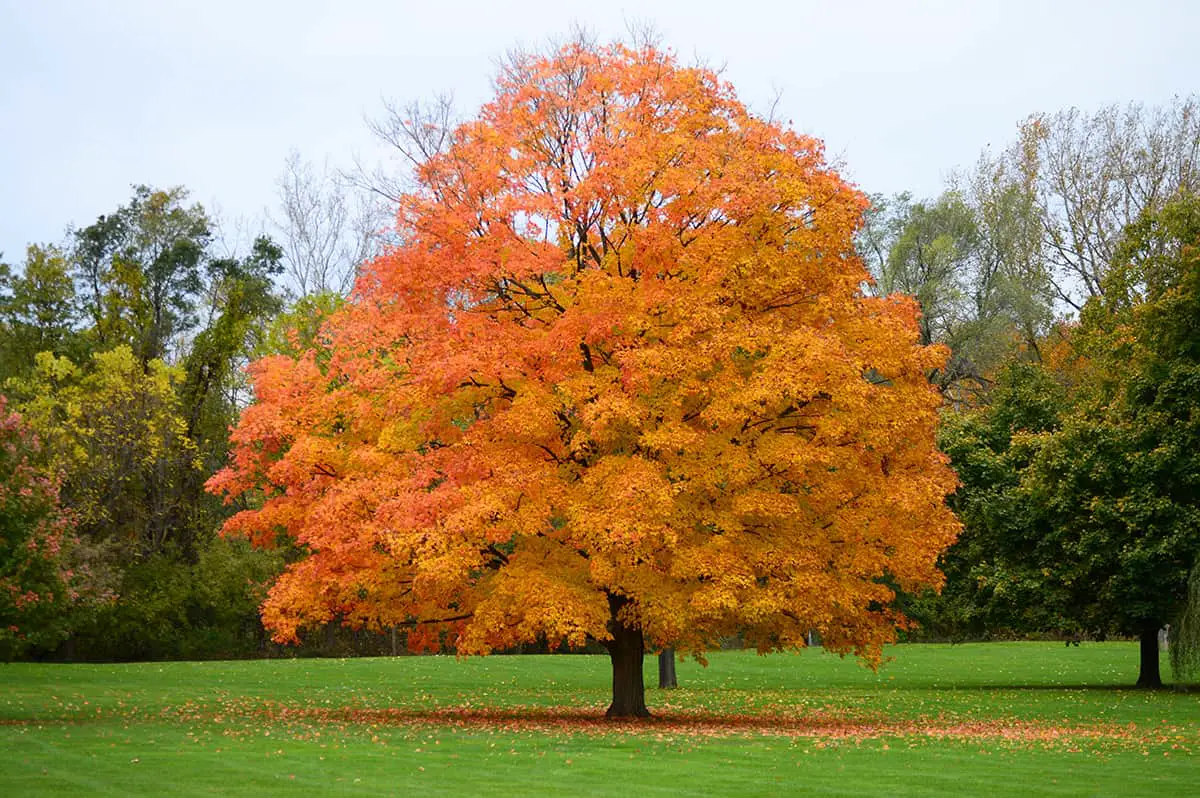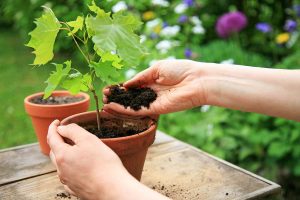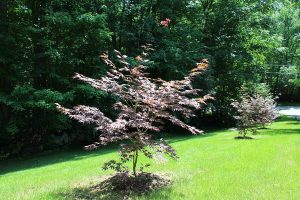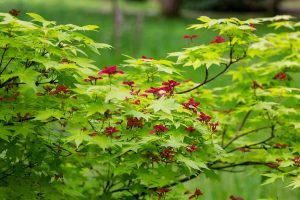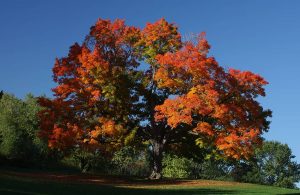Maple trees are famed for their colorful display of foliage through fall, as well as being known for their sap, which is used in the making of maple syrup. These trees are widespread across North America and can also be found across Europe and Asia. The maple tree is so synonymous with Canada that the maple leaf is prominently displayed on the country’s flag, and the red maple leaf is widely used in branding amongst Canadian companies.
There are more than 100 different species of maple tree, and these range from small trees through to enormous specimens. Maple trees are deciduous, and yet they still add interest to the landscape for much of the year. They are prized for their color-changing leaves, and also produce attractive winged fruits following their unremarkable flowers.
This post explores the origins of the maple tree and takes a look back over the history of this economically important tree. We also uncover the best ways to identify a maple tree and explain how to care for maple trees to keep them in the best possible health.
- Botanical name: Acer sp.
- Common names: Maple Tree, Bigleaf Maple, Red Maple, Paperbark Maple, Sugar Maple, Swamp Maple, Norway Maple, Japanese Maple, Acer Tree
- Plant family: Sapindaceae
- USDA hardiness zone: 3 – 9 dependent on species
- Mature height: 4 feet to 120 feet, dependent on species
- Mature spread: 3 feet to 80 feet, dependent on species
Table of Contents
Origins of the Maple Tree
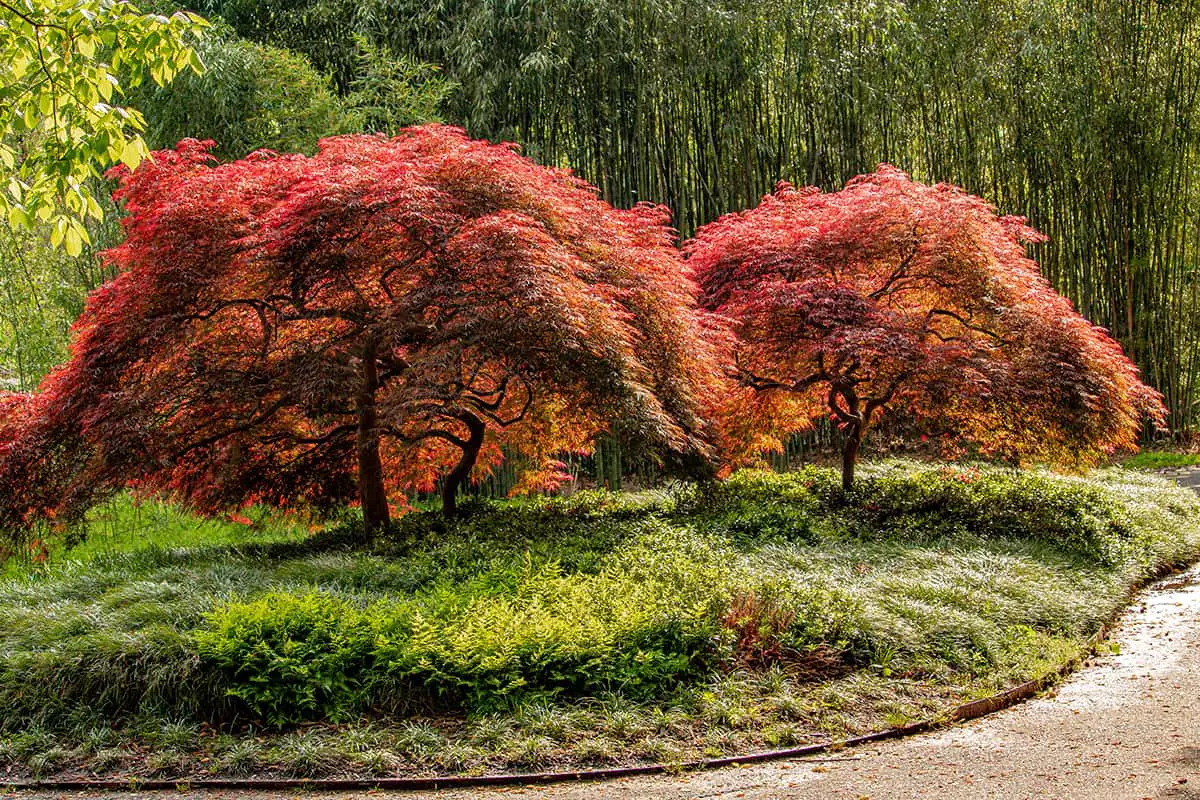
Maple trees have existed across the Northern Hemisphere for over sixty million years, though they would be unrecognizable compared to the maples we know today. Maple trees have adapted over time to ongoing climate changes and fluctuations in global temperatures. They have survived several ice ages and extended warming, cooling, and drying periods.
The first maple trees can be traced back to China, and all subsequent maple trees are believed to have emerged from these. J.J.Grossman from the Arnold Arboretum of Harvard University explains, “China is likely the evolutionary cradle of maples; despite some fossil evidence that maples originated in North America and spread to Asia over Pacific land bridges, the most recent molecular evidence points to an Asian origin.”
In more recent history, maple trees played a pivotal role for Native Americans and the early colonists of Massachusetts. Sugar Maple trees provided a source of food and medicine and the sugar made from these trees was essential for trade. It was described as early as 1609 by explorers that Native Americans had a method for creating sugar from the sap of maple trees. When settlers arrived at Plymouth Rock in 1620, they began to learn how to make various types of sugar from the Native Americans.
This included grain sugar, cake sugar, and wax sugar. Since there were no means of storing and preserving maple syrup as we know it today, the sap was instead turned into blocks of sugar that could be stored and used much later in the year. In the early 1800s, maple sugar was selling for half the price of cane sugar, making it an important local commodity.
However, by the end of the 1800s, cane sugar prices dropped and as a result, the sales of this imported sugar far outweighed the sales of domestic maple sugar. The makers of maple sugar soon turned their hands to making maple syrup, which could now be sold in bottles and cans. Today, the maple syrup industry is a multi-billion dollar industry of great economic significance in the US and Canada, which relies on the continued healthy growth of maple tree forests.
Maple Tree Identification
Maple trees are easy to identify when they are in leaf, because of their recognizable foliage. The leaves of maple trees will have five lobes, splayed out like an open hand. The edges of each leaf can be smooth or serrated depending on the species of the tree. In fall, you can spot a maple tree by its intensely red-colored foliage which fades to orange and yellow as the season progresses. Maple trees will be bare through winter, which is another way you can help to identify these trees.
Flowering maple trees can be identified by their blooms. These trees typically bloom in March or April, with very tiny flowers held in clusters. Depending on the species of the tree, the fine and feathery flowers can be green, yellow, red, or red-purple.
The flowers descend into seed pods that look like wings, and these will dangle from maple trees in clusters through the summer and into fall. They will usually be green at first, fading to brown as fall approaches.
Maple Tree Care Guide
Caring for a maple tree is really easy as long as you plant it in the right spot. If the tree gets a suitable amount of sunlight or shade and is in suitable soil, then it will be very low maintenance. After planting, most maple trees will need to be watered throughout the summer and left alone in the winter.
They don’t need to be pruned, and mature maple trees can even thrive without the addition of fertilizer. Knowing which variety of maple tree you have is essential to its care, since various different species require different types of conditions.
Light
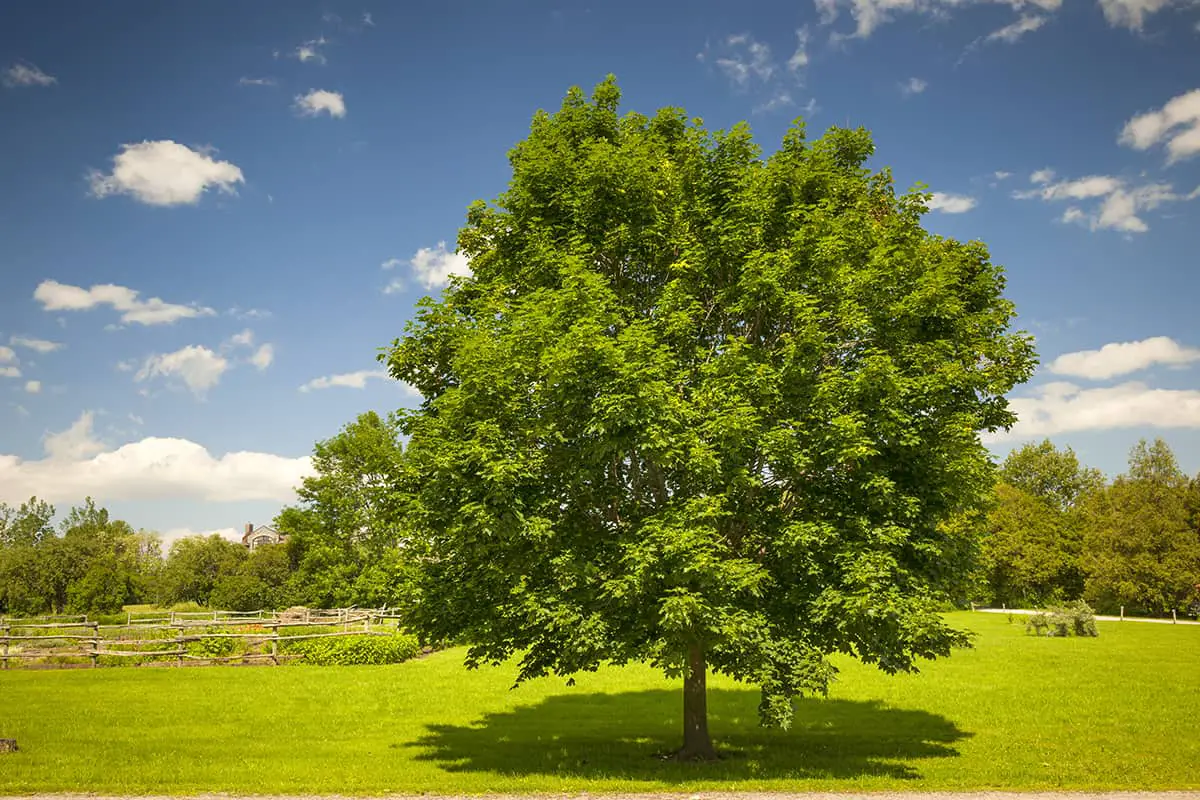
The type of light your maple tree will need will depend on which type of maple you are growing. If you are unsure about which maple tree you have, plant it in a spot that is partially sun and partially shaded since most types of maple will fare well in these lighting conditions.
Maple trees that thrive in full sun include the Florida Maple (Acer floridanum), the Japanese Maple (Acer palmatum), the Amur Maple (Acer ginnala), the Bigleaf Maple (Acer macrophyllum), and the Red Maple (Acer rubrum).
If you want a maple tree to fill a shady spot, opt for the Sugar Maple (Acer saccharum) or the Three-Flowered Maple (Acer triflorum), which both do well in heavily shaded conditions. The Sugar Maple can also tolerate bright light, but the leaves can scorch in full sun through hot summer months.
Soil
Most maple trees will thrive in soils that are well-draining and kept light to moderately moist. This means they will need supplemental watering through dry months, though no watering is usually needed throughout fall and winter. The majority of maple tree species will not do well in wet or waterlogged soils, so ensuring good drainage is essential. Amend clay soils before planting by adding sand and organic compost into the mix.
The exception to this is Sycamore Maples (Acer pseudoplatanus) which prefer woodland conditions and therefore thrive in consistently moist or damp soils. The Paperbark Maple (Acer griseum), the Three-Flowered Maple (Acer triflorum), and the Vine Maple (Acer circinatum) also prefer consistently damp soils, and they cannot tolerate drought.
For these trees, be sure to give additional water throughout dry spells, and mulch the soil to improve water retention. The Red Maple (Acer rubrum) tree is commonly known as the Swamp Maple because it actually enjoys swamp-like conditions. These trees will adapt to a wide range of soil types, including waterlogged soil.
Water
There are more the 100 different species of maple, so it’s no surprise that amongst these the water needs can vary dramatically. Some maple trees, such as the Florida Maple (Acer floridanum) can withstand drought, while others like the Red Maples (Acer rubrum) prefer consistently moist to wet soils.
Having an understanding of your maple tree and its specific needs is essential if you want to get your watering regime right. If you’re unsure of the type of maple tree you have, then aim for soil that is neither too wet nor too dry, as most maples will grow perfectly well in these conditions.
Temperature
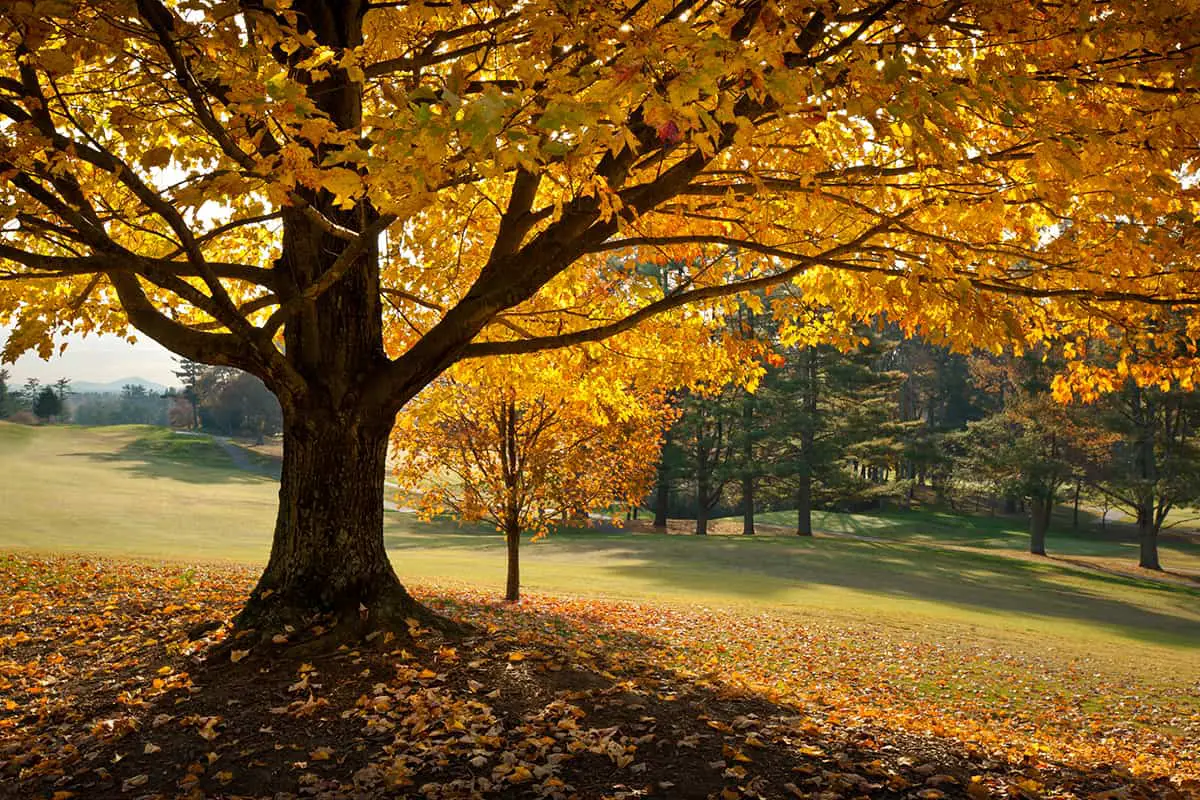
Maple trees can withstand a wide range of temperatures, though generally, they like to grow in climates that are neither exceptionally cold nor exceptionally hot. The average winter temperature in areas where maple trees grow is 0°F (-18°C), while the average summer temperature is around 60°F (10°C). Overall, you can expect most maple trees to thrive in temperatures that range from between -40°F (-40°C) and 100°F (38°C).
These are cool climate trees that are more likely to tolerate low temperatures well compared with high temperatures. Many maple trees can be grown in USDA hardiness zones down to zone 3, including the Red Maple (Acer rubrum), the Norway Maple (Acer platanoides), and the Bigleaf Maple (Acer macrophyllum). Maple trees that cannot tolerate such cool climates include the Japanese Maple (Acer palmatum) which is suitable for growing in zones 5 to 9, and the Florida Maple (Acer floridanum) which can be grown in zones 6 to 9.
Humidity
Maple trees do not need high levels of humidity to thrive, however, they can tolerate moderate humidity levels. Unless you live in a particularly humid climate, the level of humidity in your garden should be fine for your maple tree. Don’t take any effort to increase humidity for these trees.
Fertilizer
Young maple trees can really benefit from fertilizer, so be sure to add an all-purpose fertilizer to the soil around these trees when they are immature. Avoid getting fertilizer too close to the trunk of the tree as this will cause it to burn and weaken it to potential diseases and pests. Instead, work the fertilizer into the soil or use a liquid fertilizer and pour it around the base of the tree.
Older trees will not be so heavily reliant on fertilizer because these maples will have extensive root systems that can search out the needed moisture and nutrients from deep in the soil. You can continue to fertilize maple trees well into adulthood if you wish, and this can be beneficial in giving them a boost for improved foliage growth and color.
Maple Tree Size
The full size of a maple tree will be dependent on a lot of factors, including the climate it is grown in and how it has been cared for. However, the biggest deciding factor in how tall a maple tree get is its species. Some maples grow no taller than 4 feet in height, while others can grow in excess of 120 feet tall.
The smallest type of maples are Japanese maples, which grow between 4 and 30 feet in height. These are the best type of maple for compact spaces, as they won’t outgrow the garden. They are also well suited for growing in pots if you want to keep a maple tree on your patio or even on a balcony. Japanese Maples also won’t spread very far, with a typical width size of between 3 feet and 25 feet at maturity.
Keeping a maple tree in a pot will contain its growth, so if you want to restrict the ultimate size of a maple then this can be a good option. Potted Japanese Maple trees will usually not exceed 15 feet in height. The largest maple trees are Red Maples, which grow to between 80 and 120 feet in height, with a spread of between 30 and 80 feet.
Maple Tree Colors
Maple trees are known for their brightly colored foliage in the fall, and in fact these trees are synonymous with fall colors for this very reason. Maple trees are deciduous, which means they produce new leaves in spring and summer, and then shed these leaves in fall and winter, remaining bare until new leaves emerge the following spring.
The new leaves on most maple trees will be bright green, though some are flushed with red when they first unfurl, as is the case with the Red Maple. Foliage will take on a green shade through summer which can vary from light and bright green to deep, dark green. By fall, the leaves of most maple trees will have taken on a bright red color. This will then fade to orange and finally to yellow before the leaves drop to the ground.
